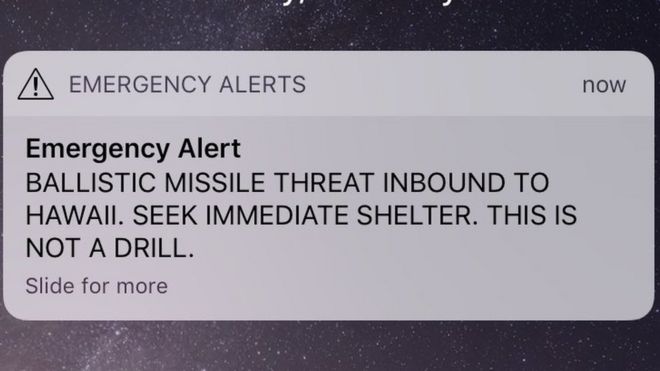New US Senate Proposal Would Send Emergency Alerts Through Netflix, Spotify, and More
In a bill introduced by Senators Brian Schatz and John Thune, the US Senate is now focusing emergency alert message right to the new age source – streaming portals for video and audio. Following the footsteps of the ALERT Act from February 2018, the READI Act would target streaming platforms such as Netflix, Apple Music, Spotify, Amazon Music, and many more.
This act comes in response to the Hawaii ballistic missile false alarm that had millions shook. This episode was deemed user error and the employee who sent the false message was immediately fired. The alert sent to Hawaii cell users in January 2018 was frightening:

This appears to be a new age bill that attempts to relay important alerts to a younger demographic. Most TV and music consumers no longer have cable or a proper radio. If you were listening to Above & Beyond on Spotify, this bill ensures you would still receive the message.
The main goal is efficiency combined with the broadest population reach. In a study released by Nielsen Music in 2017, Americans hit play on 184 billion songs in 2017. Combine that with Netflix’s staggering increase, and one could argue the bill carries some serious weight.
The timeline on the proposal is currently undisclosed. Here are some highlights of the READI Act:
The READI Act would:
- Ensure more people receive emergency alerts by eliminating the option to opt out of receiving certain federal alerts, including missile alerts, on mobile phones;
- Require active alerts issued by the President or FEMA to be repeated. Currently, alerts on TV or radio may only be played once;
- Explore establishing a system to offer emergency alerts to audio and video online streaming services, such as Netflix and Spotify;
- Encourage State Emergency Communications Committees to periodically review and update their State Emergency Alert System Plans, which are often out of date;
- Compel FEMA to create best practices for state, tribal, and local governments to use for issuing alerts, avoiding false alerts, and retracting false alerts if they occur, as well as for alert origination training and plans for officials to contact each other and federal officials during emergencies; and
- Establish a reporting system for false alerts so the FCC can track when they occur and examine their causes.



